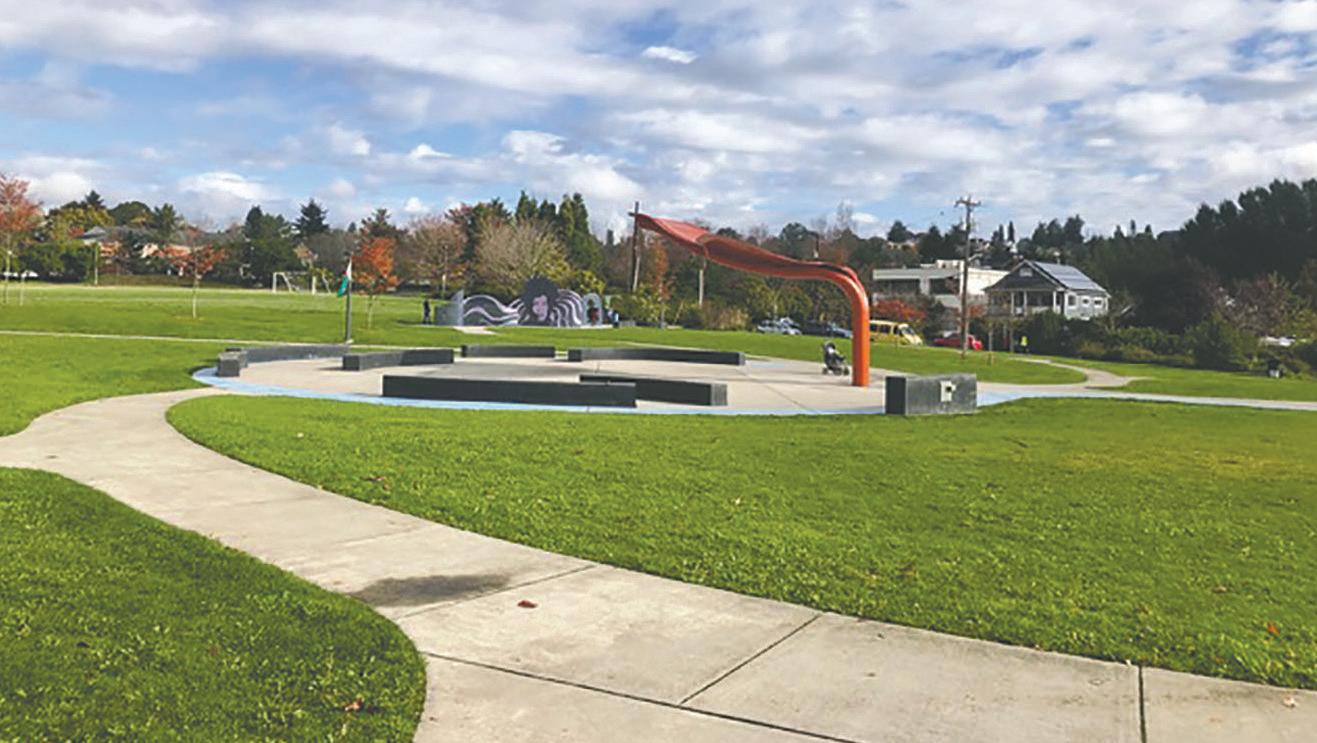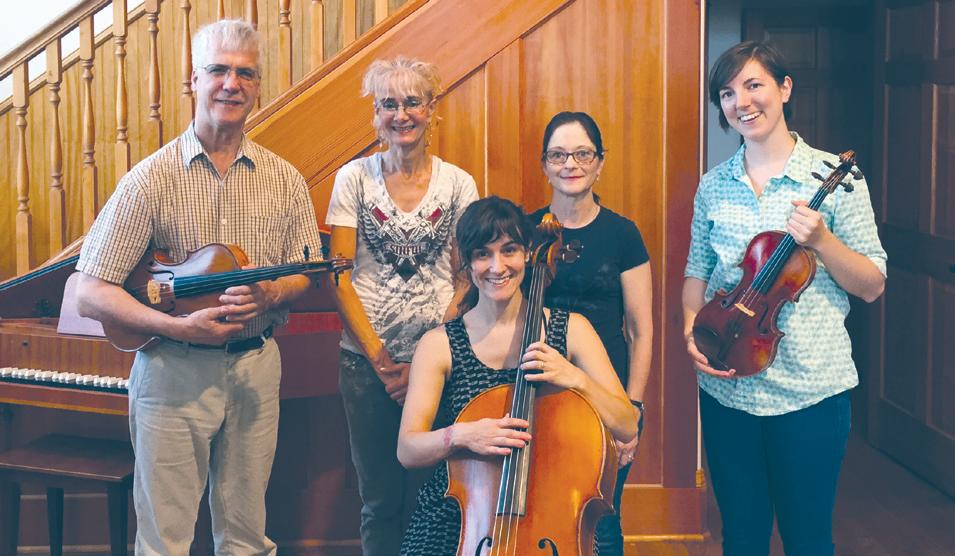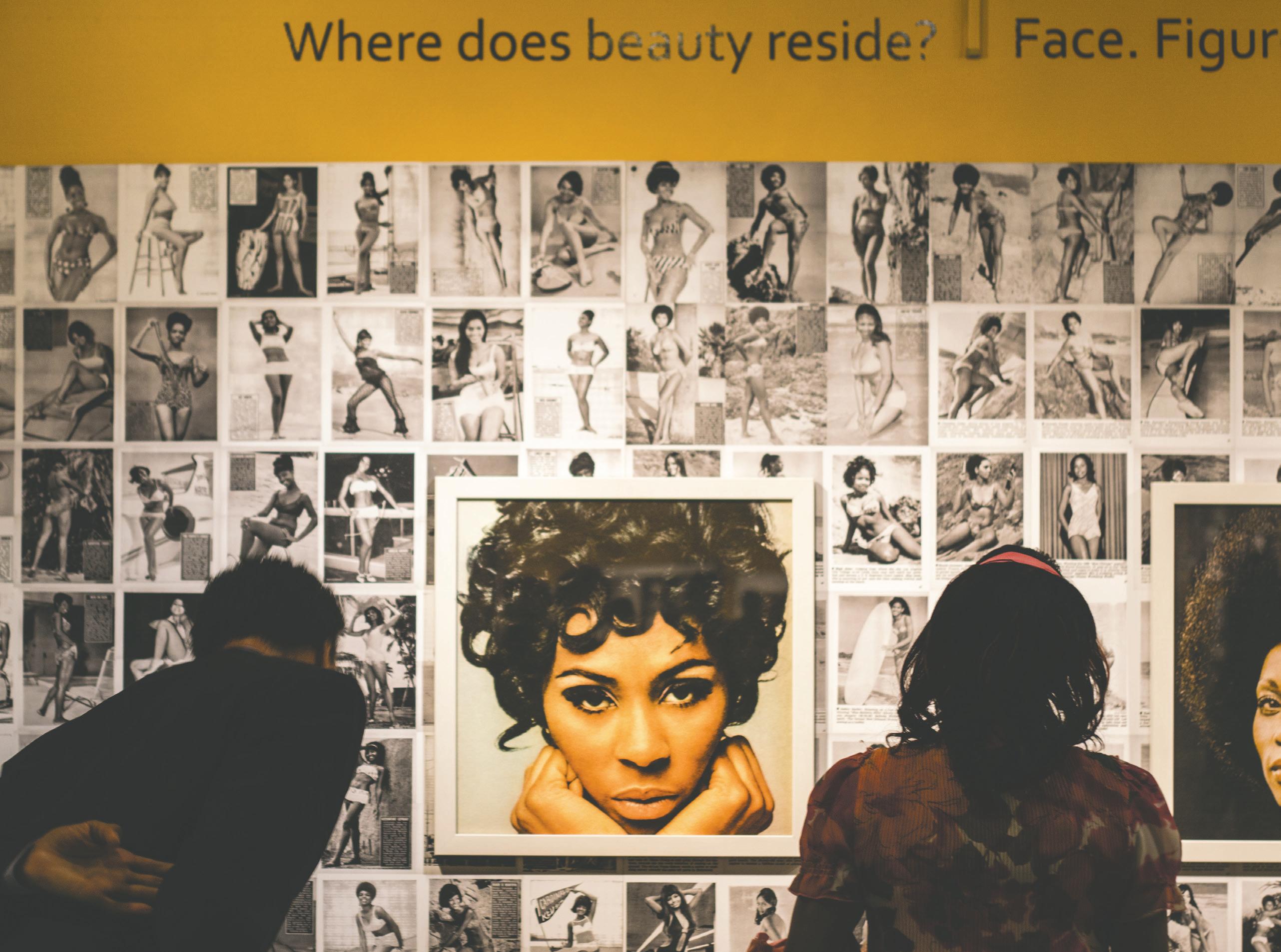
3 minute read
Jimi Hendrix Park 26
Photo by Anna Power Jimi Hendrix Park in Seattle’s Central District has an amphitheater, which can be used for community events, as well as art elements to celebrate the late guitarist’s legacy in Seattle, such as the Shadow Wall (pictured in the distance).
named after,” Janie Hendrix said.
Advertisement
The park often features a variety of gatherings to bring residents together.
“There are concerts, official city events, civic gatherings, such as in reaction to the Black Lives Matter movement, cultural activities, the Roots celebration and even private functions,” Janie Hendrix said.
By visiting a place close to where Jimi Hendrix grew up, visitors can gain insight to who he was, while feeling connected to his spirit.
“Jimi stood for racial equality and justice,” Janie Hendrix said. “The park provides a place for the community to come together to support the cause of social justice.”
Janie Hendrix encourages Jimi Hendrix fans to visit the park and see “another dimension of who he is,” while people who are unfamiliar with Hendrix

Power & Hand Tools Electrical • Lawn & Garden • Housewares • Plumbing • Custom Mixed Paint
...And A Truly Amazing Amount of Fasteners!

www.StonewayHardware.com
Wallingford — 4318 Stone Way N • (206) 545-6910 Ballard — 4910 15th Ave. NW • (206) 724-0571
Locally owned neighborhood hardware store since 1986

Professional Repairs, Appraisals, Rentals & Sales
1314 E John St, Seattle, Washington 206-324-3119 ∙ www.bviolinsltd.com
NAAM mission is to educate and enjoy

Photo courtesy NAAM The purpose of the Northwest African American Museum, which offers many different displays from Black artists and shares different positive messages such as this one about beauty, is to educate but also celebrate the history, arts and culture of the Black community.
No classes were in session, but people were already lined up at 8 a.m. outside Northwest African American Museum’s Impact Public School, recently.
Patrice Bell saw some of the same faces as last week and lots of new ones. Bell, external affairs officer for the Northwest African American Musuem, was giving out books centering on Black and brown characters for prekindergarten through high school readers from the museum’s “Knowledge is Power” program.
There are no rules people can take one for themselves, their child, their neighbor.
“People take as many as they need,” Bell said.
The museum started the program in the summer of 2020, and it was an instant hit with the community and donors.
“My goodness it’s heartwarming,” Bell said. “It’s one of my favorite programs. It’s really nice to have people come back and share that their kids loved seeing brown faces in the stories.”
Education and community support make up a lot of the programming at NAAM, from a youthmentoring program called “Interrupting Privilege,” and “Youth Curators,” in which students create an exhibit shown for a year to panel discussions. They also have celebrations of Martin Luther King Day and Grandparent’s Day and a “Black Santa” holiday photo shoot.
“Our mission is, in short, to educate, but really to make sure people understand, appreciate and enjoy the history, arts and culture of Black people in the Northwest,” Bell said.
The award-winning museum, 2300 S. Massachusetts St., founded in 2012 in the former Colman School building in the Central District, overlooks Jimi Hendrix Park, named because the iconic guitarist grew up in the community. Because it is located on one floor, NAAM has little storage for permanent galleries, so its focus is on visiting exhibits to spotlight artists of color, like 2019’s “Iconic Black Women”, by Seattle’s Hiawatha D. It makes space, however, for its most popular item: Hendrix’s trademark fedora, right off the lobby.
This small museum was a long time coming. Conceived in 1981, it took numerous task forces, committees, leagues and a sit-in to make the museum a reality. In 1985, protesters occupied the slated-fordemolition Colman School building, lasting for eight years, and then political in-fighting delayed the opening until 2012. The resulting compromise was the museum takes up the first floor, and low-cost apartments are on the upper floor.
In late 2017, LaNesha DeBardelaben joined as executive director, telling the Seattle Times her plan for NAAM was “enhancement, engagement and expansion,” and since then, Bell said, sales, volunteerism and rentals have gone way up.
By Erica Browne Grivas





